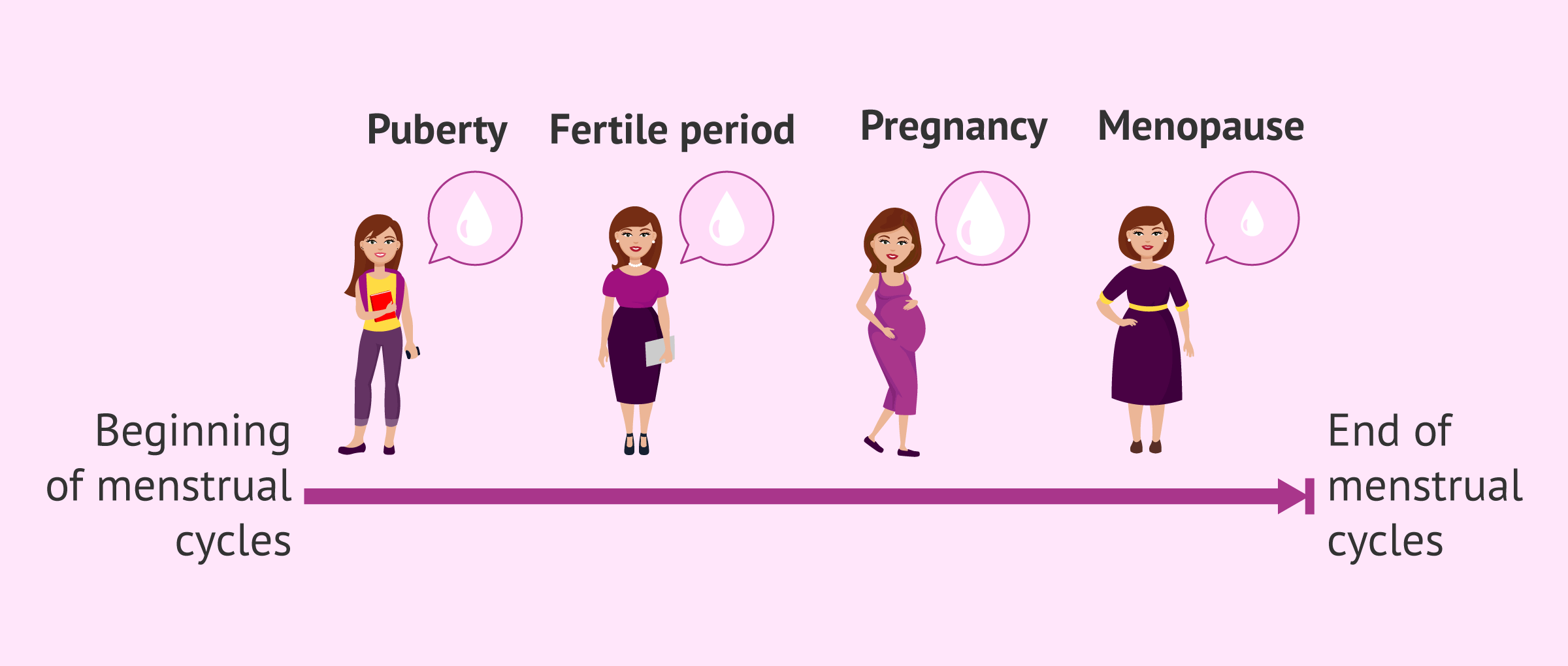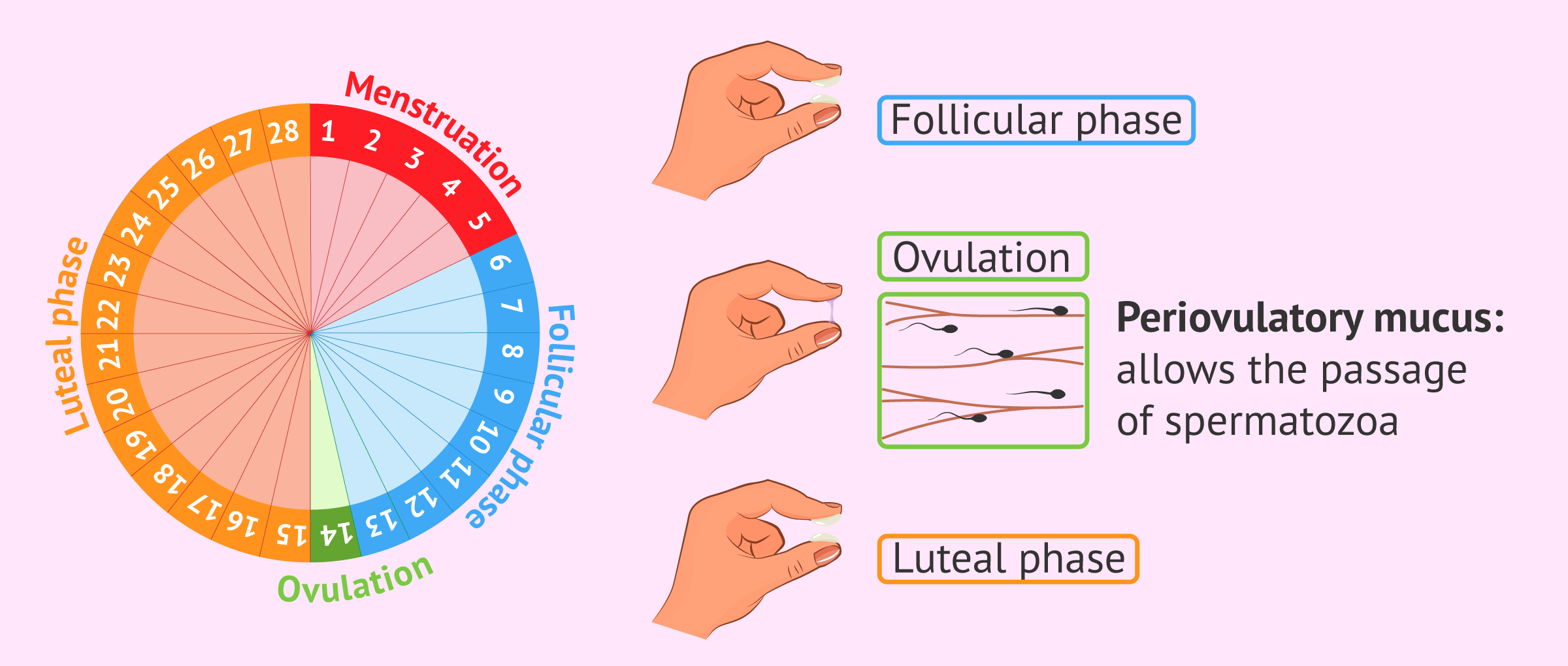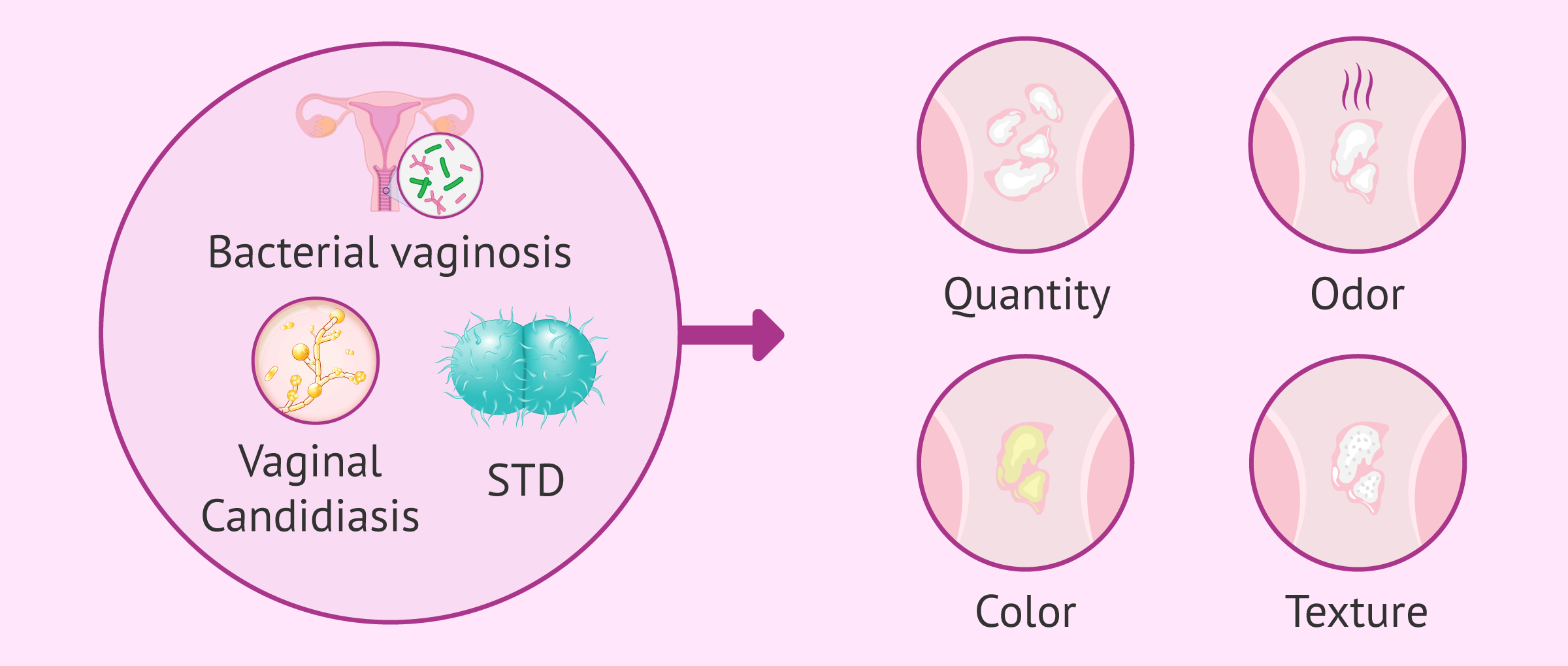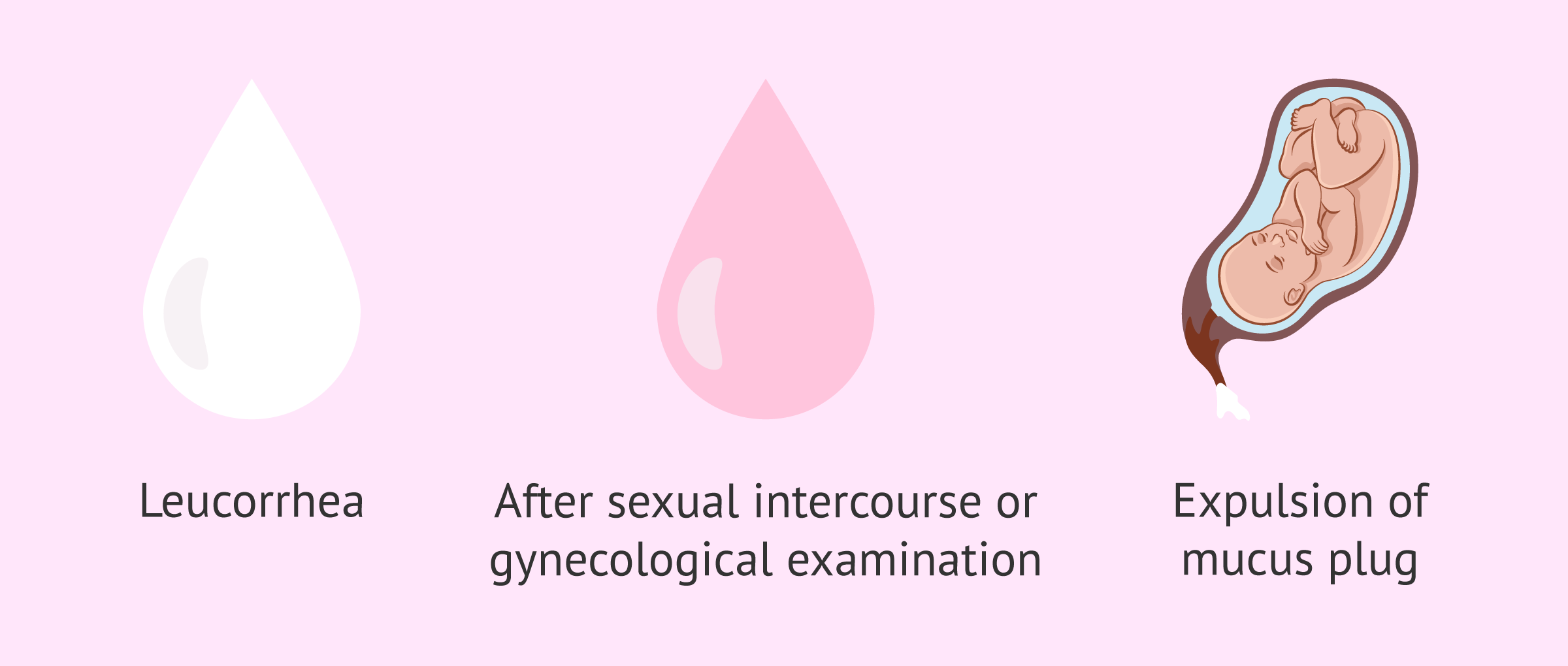Vaginal discharge is a matter of concern for many women, as they do not know whether this whitish or transparent fluid that they see in their underwear is normal and can be sticky, creamy or more elastic.
Despite this, the presence of vaginal discharge is completely normal and, in fact, beneficial, as it has a protective function to keep the vagina in a healthy balance.
Although it is true that vaginal discharge varies throughout the menstrual cycle, sudden changes in its characteristics should be discussed with the specialist. For this reason, it is important for the woman to observe and know what her normal vaginal discharge looks like.
Provided below is an index with the 10 points we are going to expand on in this article.
- 1.
- 2.
- 3.
- 4.
- 5.
- 6.
- 7.
- 7.1.
- 7.2.
- 7.3.
- 8.
- 9.
- 10.
What is vaginal discharge and what is its function?
Vaginal discharge is understood as the fluid found in the vagina that a woman can observe on her underwear or on toilet paper when wiping herself after urinating (except for menstruation).
This vaginal discharge is composed mainly of cervical mucus and, in addition, contains microorganisms and cells that it "drags along".
It is generally considered normal for a woman to have about 2-4 ml of vaginal discharge daily.
The main function of vaginal discharge is to prevent infection and keep the vagina protected, clean and moist to avoid irritation. Thus, the presence of vaginal discharge is natural, normal and necessary to maintain intimate health.
Vaginal discharge and menstrual cycle
The appearance and quantity of vaginal discharge is closely related to the levels of female sex hormones, so the adolescent may notice the presence of discharge even months before her first menstrual period(menarche).
During a woman's reproductive years, the vaginal fluid will have normal changes throughout the menstrual cycle, due to the hormonal variations that take place.
Similarly, the hormonal changes that occur with pregnancy will cause the pregnant woman to notice an increase in her vaginal discharge.
However, with the onset of menopause, the cessation of menstrual cycles and decreased levels of sex hormones, vaginal discharge will be scarce. Therefore, at menopause there will be increased vaginal dryness.
What does a woman's normal vaginal discharge look like?
As we have mentioned, vaginal discharge is different in appearance and quantity depending on the time of the woman's menstrual cycle. The reason is that the vaginal fluid is largely made up of cervical mucus, which undergoes changes throughout the cycle in response to hormonal variations:
- In the last days of menstruation, cervical mucus is still scanty. However, as the follicular phase of the menstrual cycle progresses and estrogen increases, there will be more sticky, opaque and, more or less, creamy or viscous cervical discharge.
- As ovulation approaches, the woman will notice a greater amount of vaginal discharge as cervical mucus increases. It will have a transparent, slippery and elastic appearance. Thus, periovulatory cervical mucus resembles raw egg white. This consistency of the cervical mucus allows the sperm to enter and facilitates their ascent to the fallopian tubes.
- In the postovulatory luteal phase the vaginal discharge will again be scanty and sticky.
On the other hand, sexual arousal may cause a woman to notice an increased amount of vaginal discharge, which is produced as natural lubrication.
Therefore, all these variations in vaginal discharge are completely normal and should not be a cause for concern. In fact, observing changes in cervical mucus can give an idea of when ovulation occurs and, therefore, help a woman determine the days she is most fertile.
If you want to read more information about cervical mucus and its changes, you can read this article: How is the cervical mucus during ovulation and fertile days?
What does an abnormal vaginal discharge indicate?
Knowing the normal changes in vaginal discharge will make it easier for a woman to detect when vaginal discharge is abnormal. A sudden variation in the amount, odor, color or texture of vaginal discharge could indicate an infection.
Thus, if the vaginal discharge begins to have an unpleasant odor and/or a more yellowish, greenish or grayish color it could be a bacterial vaginosis or even a sexually transmitted disease(STD) such as chlamydia, gonorrhea or trichomoniasis.
However, a thick, whitish vaginal discharge with a lumpy, cottage cheese-like appearance would be suggestive of vaginal candidiasis.
Therefore, if any abnormal change in vaginal discharge is observed, the woman should consult a specialist, especially if it is accompanied by vaginal pain, burning or itching, fever or other symptoms. Thus, depending on the cause, the gynecologist will provide the most appropriate treatment for the woman.
You can read more about changes in vaginal discharge in the following link: What are changes in vaginal discharge due to?
Vaginal discharge and pregnancy
It is very common for a pregnant woman to become concerned when she observes an increase in her vaginal discharge, which is called leucorrhea. This vaginal discharge has a whitish, viscous appearance and is odorless or has a very faint odor. Nevertheless, the presence of this vaginal discharge during pregnancy is normal, as it has a protective function.
However, just as if she were not pregnant, it is important for a woman to be careful about changes in vaginal discharge. Any variation in the amount, color, odor, or consistency of vaginal discharge should be discussed with your health care provider (especially if other symptoms such as vaginal pain or itching are also present), as this may indicate an infection.
On the other hand, a pink vaginal discharge indicates that there has been a small amount of bleeding. This may be completely normal in the pregnant woman after sexual intercourse or after a check-up with the gynecologist. However, if this pinkish vaginal discharge appears at any other time or is accompanied by bleeding or pain, it is important to see a specialist as soon as possible.
Finally, in the last weeks of pregnancy, a jelly-like discharge that may have some blood in it corresponds to the expulsion of the mucus plug. This is a secretion that, located in the cervix, prevents the entry of microorganisms into the uterus during pregnancy. However, their expulsion suggests that the time of delivery is near.
Recommendations for healthy vaginal discharge
Vaginal discharge is natural and necessary, as it has a protective function. However, changes in vaginal discharge can also alert you to a possible problem such as an infection.
To avoid these infections and maintain a healthy vaginal discharge, some recommendations can be carried out, such as the following:
- Use condoms during sexual intercourse to avoid the transmission of STDs.
- Avoid douching, as it may alter the balance of the vagina.
- Wear cotton underwear to promote perspiration.
- Do not use perfumed vaginal products.
In addition, many specialists recommend not using panty liners to prevent vaginal discharge from staining underwear, as this could be counterproductive. Instead, the most advisable option would be for the woman to change her underwear as needed to avoid the feeling of wetness.
FAQs from users
Do contraceptives cause changes in vaginal discharge?
Contraceptives may cause changes in a woman's vaginal discharge. For example, oral contraceptives decrease vaginal discharge. These women usually have a thicker discharge because oral contraceptives block ovulation.
In contrast, the contraceptive ring causes increased vaginal discharge. In any case, these changes in vaginal discharge are normal and are nothing to worry about.
Read more
Is vaginal discharge different with oral contraceptives?
Yes, oral contraceptives are a hormonal method of contraception. For this reason, the pill may change the characteristics of vaginal discharge to which a woman is accustomed, as cervical mucus varies in response to different hormone levels.
These variations in vaginal discharge should not be a cause for concern. However, a specialist should be consulted if the discharge has an unpleasant odor or changes its color or texture, as this could be indicative of an infection, especially if it occurs along with other symptoms such as vaginal itching.
What is a flow like cut milk?
A vaginal discharge that looks like cut milk (or cottage cheese) may be indicative of a vaginal yeast infection, especially if it occurs along with vaginal itching and burning.
A vaginal yeast infection is a yeast infection, usually caused by Candida albicans. For this reason, in the presence of a vaginal discharge that looks like cut milk, the woman should see a specialist, so that the most appropriate treatment can be given.
It is true that there are over-the-counter treatments for vaginal candidiasis, but it is recommended that the woman obtain an initial diagnosis from her doctor, at least the first time she presents this type of discharge and symptoms.
Suggested for you
If you would like to learn more about the menstrual cycle, to better understand the changes that occur in vaginal discharge, you can visit the following link: The menstrual cycle: what happens in each of its phases?
On the other hand, if you are interested in learning more about sexually transmitted diseases (STDs), we recommend reading this article: Sexually Transmitted Diseases (STDs) in men and women.
We make a great effort to provide you with the highest quality information.
🙏 Please share this article if you liked it. 💜💜 You help us continue!
References
Becher N, Adams Waldorf K, Hein M, Uldbjerg N. The cervical mucus plug: structured review of the literature. Acta Obstet Gynecol Scand. 2009;88(5):502-13. (View)
Coudray MS, Madhivanan P. Bacterial vaginosis-A brief synopsis of the literature. Eur J Obstet Gynecol Reprod Biol. 2020 Feb;245:143-148. (View)
Curlin M, Bursac D. Cervical mucus: from biochemical structure to clinical implications. Front Biosci (Schol Ed). 2013 Jan 1;5(2):507-15. (View)
Han L, Taub R, Jensen JT. Cervical mucus and contraception: what we know and what we don't. Contraception. 2017 Nov;96(5):310-321. (View)
Lacroix G, Gouyer V, Gottrand F, Desseyn JL. The Cervicovaginal Mucus Barrier. Int J Mol Sci. 2020 Nov 4;21(21):8266. (View)
Mitchell CM, Watson L, Mitchell AJ, Hyrien O, Bergerat A, Valint DJ, Pascale A, Hoffman N, Srinivasan S, Fredricks DN. Vaginal Microbiota and Mucosal Immune Markers in Women With Vulvovaginal Discomfort. Sex Transm Dis. 2020 Apr;47(4):269-274. (View)
Najmabadi S, Schliep KC, Simonsen SE, Porucznik CA, Egger MJ, Stanford JB. Cervical mucus patterns and the fertile window in women without known subfertility: a pooled analysis of three cohorts. Hum Reprod. 2021 Jun 18;36(7):1784-1795. (View)
Romero Herrero D, Andreu Domingo A. Vaginosis bacteriana [Bacterial vaginosis]. Enferm Infecc Microbiol Clin. 2016 Jul;34 Suppl 3:14-8. Spanish. (View)
Shipitsyna E, Roos A, Datcu R, Hallén A, Fredlund H, Jensen JS, Engstrand L, Unemo M. Composition of the vaginal microbiota in women of reproductive age--sensitive and specific molecular diagnosis of bacterial vaginosis is possible? PLoS One. 2013 Apr 9;8(4):e60670. (View)
Vazquez F, Fernández-Blázquez A, García B. Vaginosis. Vaginal microbiota. Enferm Infecc Microbiol Clin (Engl Ed). 2019 Nov;37(9):592-601. English, Spanish. (View)
FAQs from users: 'Do contraceptives cause changes in vaginal discharge?', 'Is vaginal discharge different with oral contraceptives?' and 'What is a flow like cut milk?'.







Hemorrhoids from childbirth? This makes no sense to me. I had a very slight case of them after having my daughter 7 weeks ago. Some mild discomfort during bathroom trips, maybe 1 day of itching, and that was all. It stopped bothering me pretty quickly. I never even had to try using a product. I know they won’t just magically disappear, but now out of nowhere I’m experiencing horrible pain with my bowel movements. I’ve actually found my love for prunes and eat lots of them everyday, and added more fiber anyways after dealing with them the first time around so every stool is a soft one, couldn’t have made a cut or anything, and yet the past few times have been more painful then childbirth! Anyone else experience this? I don’t understand what’s going on.